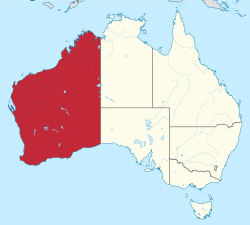| Trithuria austinensis | |
|---|---|
| Scientific classification | |
| Kingdom: | Plantae |
| Clade: | Tracheophytes |
| Clade: | Angiosperms |
| Order: | Nymphaeales |
| Family: | Hydatellaceae |
| Genus: | Trithuria |
| Section: | Trithuria sect. Hydatella |
| Species: | T. austinensis |
| Binomial name | |
| Trithuria austinensis | |
 | |
| Trithuria austinensis is endemic to Western Australia [1] | |
Trithuria austinensis is a species of aquatic plant in the family Hydatellaceae endemic to Western Australia. [1]